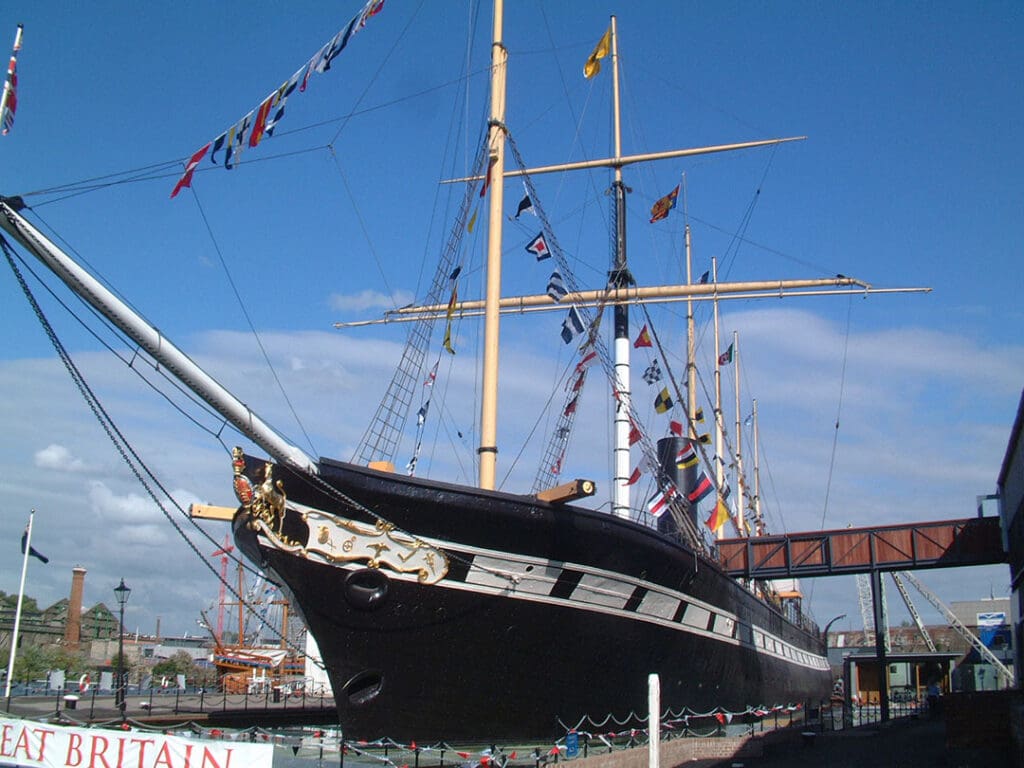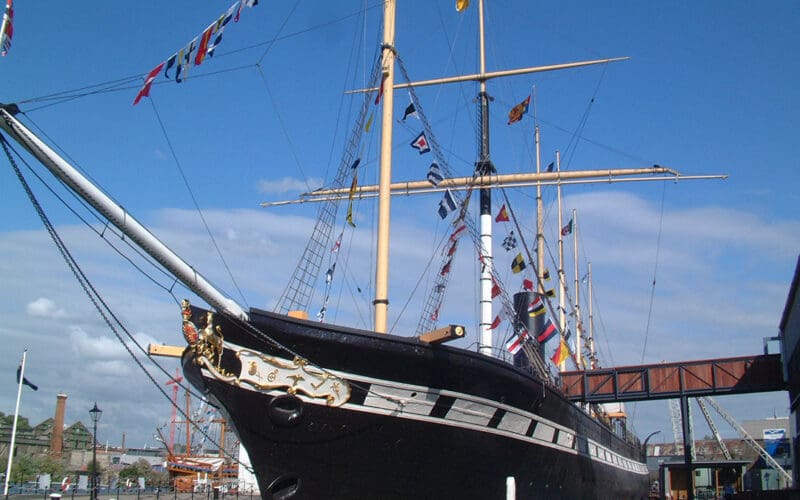
After the success of Great Western (ON issue 288), Isambard Kingdom Brunel set his sights on an even larger ship, Great Britain, which from 1845 to 1853 was the largest passenger ship ever built at 322 feet LOA. Brunel, an innovator, took radical design leaps as the Great Britain was the first ship to be built of iron and was the first ship to be outfitted with a screw propeller. The ship became the template for all future ship-building construction and was the very first iron, sail-assisted steam vessel to cross the Atlantic.
Great Britain was so big that a specially designed dry dock had to be built in Bristol to accommodate its construction. Initially, the plans called for wooden construction, but Brunel thought iron would be better hull material. Iron at that time was less expensive than wood and would not hog as a wood ship would at over 300 feet of construction. Initially, Great Britain was designed as an auxiliary sail/paddle wheel vessel, not unlike the ship Great Western, but Brunel, always the tinkerer, changed his mind and instead designed a six-blade screw propeller, mounted aft to move the ship. This was the first of its kind. This decision during construction set back the launch a year. To assist the steam power, Great Britain was rigged as a six-masted sailing ship with retractable masts. Great Britain was also the first ship whose standing rigging was made of iron cable instead of the traditional hemp. The first outbound trip from Liverpool to New York took 14 days, averaging 9.25 knots—fast, but not a record.
In its transatlantic iteration, Great Britain had a relatively short career because early on, it ran aground off Ireland and was sold as salvage. It bankrupted the company, but Great Britain was repaired and had a long and very successful career, primarily as a sailing ship carrying immigrants from England to Australia. It was converted to all sail in 1881. More about that in our next issue.
For the sake of having fun, we will create a problem for February 29, a leap year. The trip takes place February 29, 1848, another leap year.
We will be using the 2024 Nautical Almanac. The DR is N 46° 25’ by W 58° 06’. The height of eye is 20 feet. We are doing a lower-limb sun sight at a time of 16:23:35 LMT.
1. What is the GMT?
2. The captain observes the sun with an Hs of 12° 30.’ Find the HO.
3. Calculate LHA.
4. Using HO249, Volume 3, calculate intercept LOP. Then plot estimated position.
For answers go HERE.

